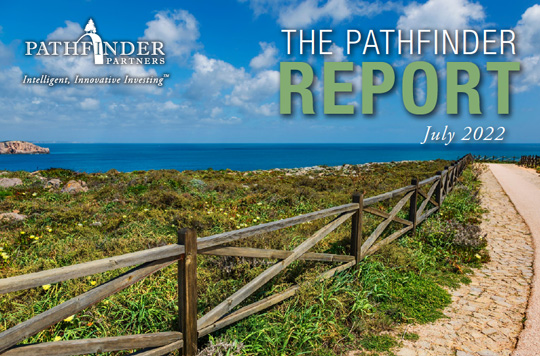Zeitgeist - Sign of the Times
Multifamily Pandemic Report Card
The past two years have been a rollercoaster for multifamily owners and investors. When the pandemic began in March 2020, fundamentals were solid but lockdowns negatively impacted many owners’ bottom lines. The recovery in 2021 was strong and those tailwinds continue – though the impact of inflation and rising interest rates creates uncertainty in 2022. A more detailed review is below.
2020 – C- to B- (depending on the market and property type): When Covid-19 hit in 2020, the future of the multifamily industry was uncertain at best, and downright scary, at worst. Landlords – or housing providers as we prefer to be called – juggled tenants who were unable or unwilling to work (and pay rent) and various federal, state and local eviction moratoria. While real estate sectors like retail and hospitality suffered due to stay-at-home orders which boosted internet shopping and depressed travel, the impacts were not nearly as severe for multifamily housing. An increased renter appreciation for their home – which often doubled as a workplace and sometimes a school – coupled with stimulus packages like the CARES Act (which pumped trillions of dollars into consumers’ pockets), buoyed the multifamily industry early in the pandemic while many sectors of the economy suffered or stagnated.
 As 2020 progressed, the multifamily industry experienced unprecedented renter migration as renters relocated from denser urban-core markets to lower density (and sometimes more affordable) suburban and secondary markets. Even with these changing migration patterns and an ongoing federal eviction moratorium, data provided by the National Multifamily Housing Council showed rent collections dipped just 0.1%-3.1%, depending on the asset class. Class-B properties, otherwise known as workforce housing, outperformed other multifamily asset classes while lower cost Class-C properties saw higher delinquency and more expensive Class-A properties struggled with vacancy.
As 2020 progressed, the multifamily industry experienced unprecedented renter migration as renters relocated from denser urban-core markets to lower density (and sometimes more affordable) suburban and secondary markets. Even with these changing migration patterns and an ongoing federal eviction moratorium, data provided by the National Multifamily Housing Council showed rent collections dipped just 0.1%-3.1%, depending on the asset class. Class-B properties, otherwise known as workforce housing, outperformed other multifamily asset classes while lower cost Class-C properties saw higher delinquency and more expensive Class-A properties struggled with vacancy.
2021 – B+: As the pandemic rolled into 2021, both primary and secondary U.S. markets recorded historic rent growth. According to a Zumper study on 2021 rents, New York City – the country’s premier primary market – saw 32% rent growth after rents fell 12% in 2020. Phoenix, one of the hottest secondary markets, saw 23% rent growth after 5% growth in 2020. Tertiary markets like Boise and Bakersfield, previously under the radar for many multifamily investors, saw rents rise 25% and 21%, respectively, while rent growth nationwide was 11%.
2022 – A: Despite the best efforts of the Federal Reserve to fight back the highest inflation in 40 years, economic tailwinds continue to propel strong multifamily fundamentals. According to a recent Yardi Matrix report, nationwide rent growth year-over-year through May was 14%, extremely high by historical standards. The largest increases were posted in Florida with Miami, Orlando and Tampa jumping 22%-24% while western markets like San Diego and Phoenix continued to outperform the national average with rent growth of 21% each. Meanwhile, homeownership continues to be pushed beyond the reach of many Americans – especially in more desirable cities – as home price appreciation runs at double digits and mortgage interest rates rise sharply. These expensive homes are further solidifying demand for multifamily housing.
All in all, we’d say the industry gets good marks for its performance during the pandemic and while we expect rent growth to moderate, we think the positive fundamentals will continue.
Record Unaffordability in the U.S. Housing Market
The U.S. for-sale housing affordability index fell to 102 in May, edging dangerously close to 100, which is considered unaffordable. The index was 145 just six months ago. Record high pricing coupled with rising interest rates made May the most expensive month to buy a home since July 2006. The typical monthly mortgage payment was $1,842 in May, up from $1,220 in May 2021, a 51% increase in just a year. This is the result of a 20% rise in home prices during the past year coupled with a doubling of mortgage rates from around 3% this spring to above 6% in June. While mortgage rates have lowered in recent weeks, experts believe affordability is likely to continue to worsen as demand exceeds available inventory and home price appreciation outpaces wage growth. Markets are betting on a .50% to .75% increase in the Federal Funds rate in July, which will also move mortgage rates higher.
On the supply side, active listings in June were down 53% from June 2019 levels, the last comparable pre-pandemic year. As homes become less affordable, many buyers have dropped out of the market creating less competition and a slowdown in buyer traffic and overall sales activity. And the remaining buyers, who are facing drastically higher interest rates, are readjusting their budgets. Typically, when home affordability falls, more people choose to rent.
Share this Article
